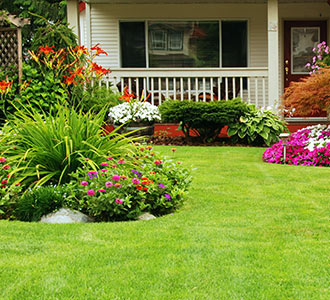Can You Save Plants That Are Already Frozen?
How fast do plants die when they are exposed to cold temperatures? Can you bring them back to life? There are no straight-forward answers here because there are too many “ifs” standing in the way. As a landscaping specialist would say, it depends on the temperatures, for how long the plant was exposed to the cold, and what kind of plant we are talking about. Whether or not you can save a frozen plant has to do with how fast you react, your knowledge, the plant species, and the extent of its exposure to the frost.
At What Temperatures Do Plants Die?
It depends on how resistant the plant is to harsh weather conditions. Some die under 50 degrees F while others can withstand freezing temperatures. In many cases, light frost won’t kill plants unless they are very sensitive. Of course, the longer they are exposed to the frost, the more damage they will receive. It’s wise for you to check the cold resistance of your plants so that you will know how to protect them or if it’s worth trying to save them.
Why Do Plants Freeze?
When it’s freezing, water in plant cells freezes too. This can destroy them because they dehydrate. One would think that if the sun comes out, plants will find the strength to resuscitate again, but they are actually shocked. Since their cells are damaged, the quick defrost will only destroy their stems and leaves. With the plant cells ruined, the tissue of the plant is changing. In order to defend themselves against the frost, plants move water from their cells, and that’s why they dehydrate.
Can You Save Frozen Plants?
That’s a tricky question because it depends on the plant and how long it was exposed to what temperatures. One thing you can do to check whether the plant’s roots have died is to scratch their bark. Start smiling if the plant is green underneath the bark. This means that it has been shocked from the cold temperatures and has lost its leaves, but its tissue is still healthy. It can bloom again when the weather gets better. What you can do is make sure these plants have enough moisture and use some garden fertilizer when the frost is over.
When it comes to potted plants, which can be moved to more sheltered areas, bring them inside and away from the sun. It’s best to cut back the bark and let the plant self-heal. But don’t prune plants, which are left outdoors. Their bark offers some protection for as long as the frost lasts. You can prune them when the spring comes. If we are talking about plants with soft stems, it’s better to prune them since they might rot easily.
Saving a plant that has already frozen is a matter that depends on many variables. But as it happens with all things, preventing is better than curing. Try to remember taking action before the temperatures fall and always get the help of a professional landscaping maintenance expert.

 It depends on how resistant the plant is to harsh weather conditions. Some die under 50 degrees F while others can withstand freezing temperatures. In many cases, light frost won’t kill plants unless they are very sensitive. Of course, the longer they are exposed to the frost, the more damage they will receive. It’s wise for you to check the cold resistance of your plants so that you will know how to protect them or if it’s worth trying to save them.
It depends on how resistant the plant is to harsh weather conditions. Some die under 50 degrees F while others can withstand freezing temperatures. In many cases, light frost won’t kill plants unless they are very sensitive. Of course, the longer they are exposed to the frost, the more damage they will receive. It’s wise for you to check the cold resistance of your plants so that you will know how to protect them or if it’s worth trying to save them. That’s a tricky question because it depends on the plant and how long it was exposed to what temperatures. One thing you can do to check whether the plant’s roots have died is to scratch their bark. Start smiling if the plant is green underneath the bark. This means that it has been shocked from the cold temperatures and has lost its leaves, but its tissue is still healthy. It can bloom again when the weather gets better. What you can do is make sure these plants have enough moisture and use some garden fertilizer when the frost is over.
That’s a tricky question because it depends on the plant and how long it was exposed to what temperatures. One thing you can do to check whether the plant’s roots have died is to scratch their bark. Start smiling if the plant is green underneath the bark. This means that it has been shocked from the cold temperatures and has lost its leaves, but its tissue is still healthy. It can bloom again when the weather gets better. What you can do is make sure these plants have enough moisture and use some garden fertilizer when the frost is over.




